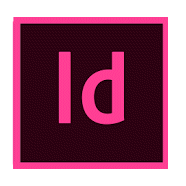


The assignments are tailored-made to practice the tools and methods discussed, with the help and supervisor of Iliana. All days will have theoretical and practical parts. For the last two sessions, we will focus on the layout design of different files such as a figure, a poster, a cv, or a brochure. The first two sessions' focus is on a thesis book's layout and multiple-page documents. To draw detailed artwork & infographics, we advise you to follow the other course provided (Scientific Artwork - Data Visualisation and Infographics with Adobe Illustrator.) Instructional method Remember that Adobe Illustrator is used to draw detailed illustrations and vector graphics, while Adobe InDesign to layout documents, from single figures to thesis books. InDesign will become the more straightforward and prominent alternative for Adobe Illustrator, to layout scientific artwork and design simple illustrations and figures.

That course also prepares you to create your products but focuses more on elementary subjects for using InDesign and design theory. If you'd instead take things a bit slower and have the basics explained a bit further to you, consider taking the course 'Adobe InDesign' by trainer Vincent van der Vliet. The assignments will make you confident to work on your design challenges at the end. This allows the course sessions to focus in-depth on the tools, tips, and tricks to layout your long-text documents (e.g.thesis) or short-text documents (e.g., posters, cv, brochures, and figures).
#ADOBE INDESIGN COURSE MANUAL#
Iliana's course provides you with a manual that you can skim upfront, save some time on the first session, and use it afterward to refresh the theory. You will learn to layout several kinds of files and design your templates. Finally, you will hear about the differences between print (CMYK) and screen colors (RGB) and exporting different sorts of files (e.g., jpeg, png, tiff, pdf).
#ADOBE INDESIGN COURSE HOW TO#
You will understand the use of master pages (templates), paragraph & character styles, and you will discover how to use them to create complex layouts such as PhD dissertations. You will learn how to format text, images/objects, and tables. You will start navigating through the different tools and functions to build a reliable workflow. This course aims to teach you the main functionality and power of Adobe InDesign. Iliana has been working for a decade with PhD students, so her knowledge of tricks, tips, but also conflicts with the Microsoft programs, will become handy.No previous knowledge of the program is needed. At the end of the course, you will be equipped with the necessary knowledge to combine photos, illustrations, tables, and text with remarkable ease. You will be introduced to the program's workspace, and you will work with tailor-made exercises. It will teach you how to create attractive and functional layouts, such as thesis books, posters, resumés, presentations, figures, and more. This course will dive into the countless possibilities of layout documents with Adobe InDesign. That course also prepares you to create your own poster or thesis, but focuses more on elementary subjects for using InDesign and design theory.

If you'd instead like to take things a bit slower and have the basics explained to you, consider taking the course Adobe InDesign by Vincent van der Vliet. The assignments will make you confident to design your projects at the end. This allows the trainer Iliana during the course sessions to focus in-depth on the tools, tips, and tricks to design your long-text documents (e.g.thesis) or short-text documents (e.g., posters, cv, brochures, and figures). Key Terms: page numbers, table of contents, index markers and index, break characters, special characters, glyphs, etc.This course provides you with a manual that you can skim upfront, save some time on introduction during the first session, and use it afterward to refresh the theory. Use tools to add special characters or content. Key Concepts: managing overset text, threading text, text wrap, primary text flow, text columns, etc. Manage text flow across multiple text areas. Key Concepts: benefits/disadvantages, etc. Key Settings: indentation, alignment, paragraph spacing, hyphenation, Drop Cap, numbered and bulleted lists, using and working effectively with paragraph styles, etc. Use appropriate paragraph settings in a design. Key Settings: font, size, character style, kerning, tracking, leading, baseline shift, horizontal and vertical scale, and color used to enhance readability and hierarchy, etc. Use appropriate character settings in a design. Key Tools: text frames, Type tool, and Type on a Path tool. 4.2 Add and manipulate text using appropriate typographic settings.


 0 kommentar(er)
0 kommentar(er)
